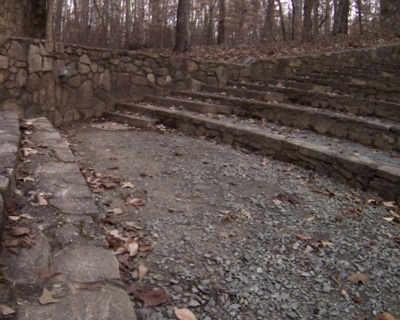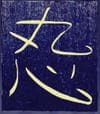Spotting movement opportunities around you is a trainable skill. In parkour we call this either parkour vision or traceur vision. In Feeling Creative it was all about the benefits of developing this vision; now it's time to learn how to train it.
To improve parkour vision you have three means of learning (in order of usefulness): visualization, learning from community and video inspiration. Let's start with the most important, visualization.
Visualization
It's a fancy word, but all we're talking about is imagining yourself moving. It doesn't matter whether a movement is possible for you, especially at first. Just picture yourself moving through the environment right in front of you.
Without further direction trying imagining a route might be daunting. That's okay. There's a method to improving your vision until you're flowing through your environment with nary a thought necessary.
You'll go through three basic stages as you improve your Parkour vision: experimentation, combination, and improvisation. For fun, let's look at these stages through a metaphor.
Stage 1: Experimentation
Learning movement skills is like learning a new language. You've got your nouns (obstacles) and the basic verbs you've learned (techniques) which you combine to form sentences. Stage 1, then, is simply learning to look for pairings of obstacles and techniques. You see a waist-high railing and think "I could lazy vault that," or a wall taller than your head "I'd need to wall pass (run) that." You can practice this anytime you're out, whether on foot or in a vehicle. Look at an obstacle and ask "How could I pass over/under/through that quickly?" Do this constantly.
If you're practicing every day, identifying obstacles will become second-nature quickly. However, there's another part of the skill you need to train: spotting gaps. Learning to look for gaps is more difficult, requiring a more active imagination, especially at ground level. Why is it harder? First, you have to have a sense of your jump range and the ability to perform the mental calculus necessary to gauge a jump and know whether it's physically possible for you to make. Second, you often have to learn to see what isn't obviously there. A gap doesn't need to be a yawning chasm to be a good challenge. Gaps that are millimeters high are still gaps, and if you're a beginner they are the best for testing the limits of your abilities. Painted lines, parking stops, curbs, rocks and benches are everywhere and vary in challenge from beyond easy to impossible. You don't need to venture far from the ground to find, or create, gaps.
Stage 2 - Combination
The next stage in learning a language is to begin to move from sentences to paragraphs. With our metaphor, this means stringing movements together. Now we're getting into the meat (mmm) of parkour, navigating your efficiently.
By this point you should be able to recognize obstacle/technique pairings and jumps with ease. If you do, then the simplest way to approach Stage 2 is to imagine yourself starting where you're standing (point A) and pick a spot beyond a set of obstacles (point B) and imagine how you could efficiently get from A to B. Got it? Now try it.
This method works whether you're dealing with two obstacles or twenty. If you're interested purely in the practical, escape and pursuit aspects of Parkour practice, you only need this approach to develop great parkour vision.
Stage 3 (and beyond) - Improvisation
After a ton of practice in the first two stages you'll begin to internalize the techniques and ability to see routes. Now, stop thinking and stop planning. This is Stage 3. Improvisation happens best when you let your skills flow through you, trusting your body to know what to do. It's the ultimate test for your skills, quickly revealing what you're well-practiced at, as well as what you still need work on.
To clear flaws we continue practicing, sometimes still in Stage 3, but more often returning to Stages 1 and 2 for further refinement.
Beyond that, Stage 3 practice becomes more about exploration, imposing limitations, and creating hypothetical scenarios to drive creative use of Parkour vision, but that's for another time.
Learning from community

I've trained in many spaces, often for years, thinking I had identified all the movements I could do there. I trained around the Forest Theater steps for over six months without seeing the progressive precision jump challenge (a small gap, see what I mean?) there. Then friends show up to train and jam and one of them does some new thing there and I'm proven horribly, horribly wrong. Harnessing the vision of more experienced practitioners, or just practitioners with different experiences, can point out blind spots in your own awareness.
There is no magical formula to finding those blind spots. All you need is a community to train with from time to time. If you're training on familiar ground, simply pay attention to what and how the others are practicing. Then (if it's doable for you) it's just a matter of practicing it yourself and remembering to keep an eye out for similar opportunities elsewhere down the line.
Even if you're in a new area, there are opportunities to enhance your vision through watching what others are practicing. Keep an eye out for how other traceurs/traceuses interact with different obstacles or obstacle pairings. Likewise, participating in conversations and talking through possibilities in a spot is a great way to get insight into how others visualize routes.
Watch other people, then try applying what you see to your own visualizations and physical practice.
Video Inspiration
The final, and most limited, place to improve your parkour vision is through watching videos. Good parkour videos are hard to come by, so this option should be used sparingly (or we'd be watching all the time instead of training).
Excellent parkour videos can, like learning directly from your community, reveal possibilities you hadn't ever considered for movements and creative use of space. What are you looking for in a video? The ways specific techniques are used with obstacles, novel movement combinations, unusual obstacles and many other things. You can't often copy what you see (either due to skill level, location, or safety) but if you're creative enough, you can adapt tactics and movements to your current level and locations.
Here are some recent inspirations to get you started. Start with this video from Scott Bass - it's long but well worth it. Another few I really enjoyed recently were Creativity, parkour of the weak, DüDieDinosaurier and Absolute Vulnerability.
Cycling back
Take the ideas you glean from your friends and community and from videos, and bring them back into your own practice of visualizing movement. Whenever you have the opportunity, take your imagined movements for a road test. The immediate feedback from your physical practice will help to nourish and tailor your visualization ability, resulting in more quick, creative, consistently realistic and personalized imaginings. Then just ride the growing wave of possibilities to practice everywhere, all the time and forever.
Keep imagining and let your creativity and vision soar.
